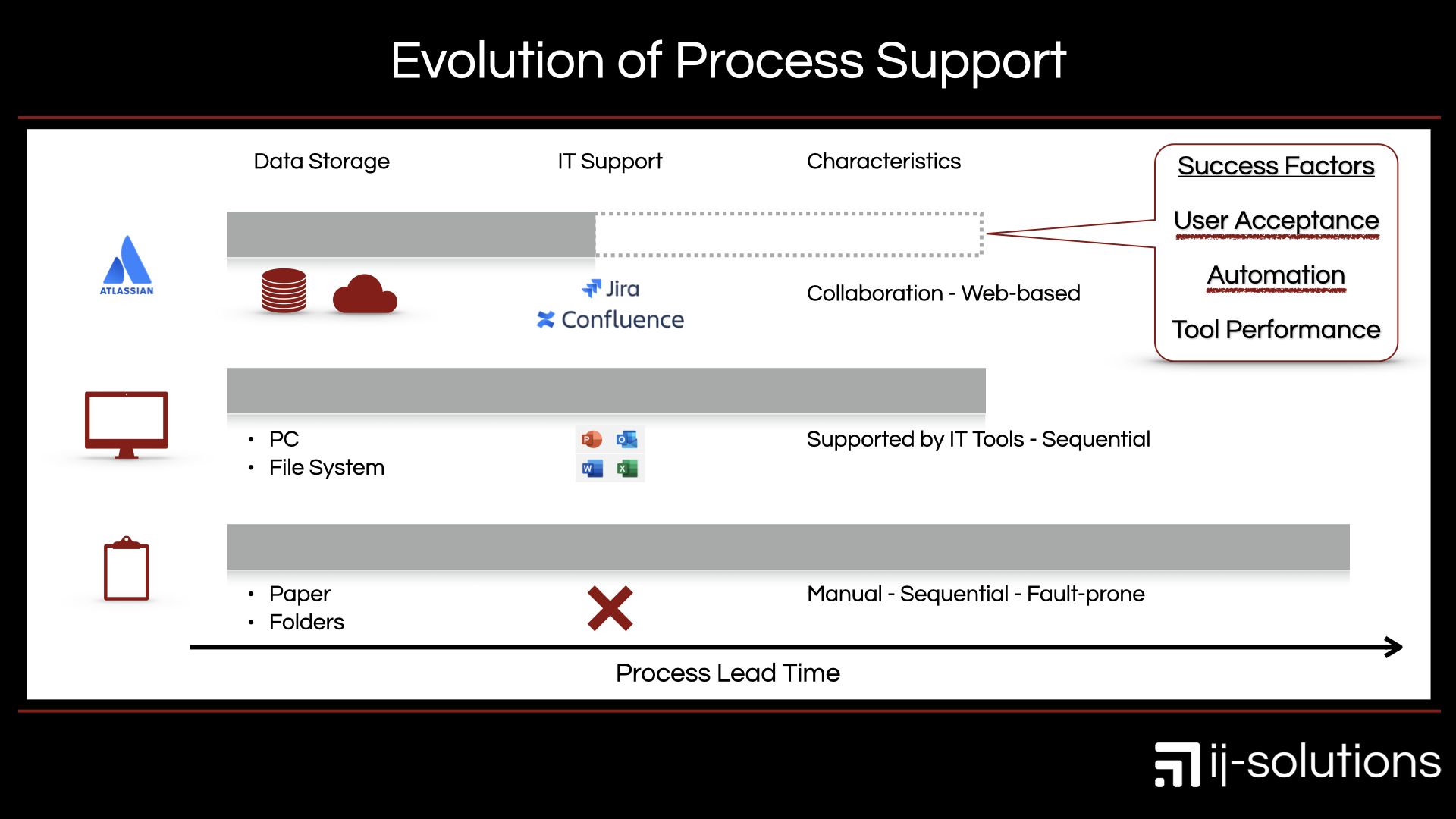Today, I would like to write about processes, how they changed over time and what that has to do with the support by IT tools.
I did a short talk about this which can be found here.
Change of Process Pace
If you look at the following two examples, you see that process pace changed over time.

The VW Golf models have been released in shorter time intervalls, which made it necessary to reduce the time for development and to speed up processes. At the same time the complexity and number of variants increased. Nevertheless, new models have been introduced, after an intervall of 9 years at the beginning, in shorter and shorter cycles.
However, process times decreased not only in R&D. Also operational processes changed over time. The second example shows the order process of products. Formerly, goods which havn't been bought in shops have been selected in catalogues or magazines by customers and ordered by mail at the manufacturer or vendor. This order mail took 2-3 days to arrive and after processing, it took several days until the product finally arrived at the customer. Today, every manufacturer or reseller has his own online shop where products can be ordered 24/7. Delivery takes place within a few days, on the next or even on the same day. In order to provide this service to customers, companies need to improve their processes to work on orders faster and to deliver within shorter time periods.
Evolution of IT Process Support
The described improvements of processes can be achieved by various ways. For sure, the processes themselves could be designed more efficiently and lean to reduce the process lead time. However, this won't be the topic in the following, as I will focus on improvements regarding support of processes by IT-tools here.
It all started with paper based processes. Using computers was an exception rather than the normal, information was written and distributed on paper and there was no support by any IT-tools. Thus, such processes have been manual, sequential and there was a high risk of making mistakes. Due to longer times for communication and exchange of information it was not transparent where you are in the process, what has already been completed and what is still open. Accordingly, the process lead time has been quite long.
This change when computers came up and every process participant had his own PC. Data and information were stored on file servers and PCs and tools like Microsoft Office enabled to exchange information more quickly. Instead of forwarding documents for hours and days, they could be sent within seconds by email. Processes have been supported by IT systems, which reduced the process lead time. However, the process steps are still conducted sequentially as it is still difficult to work on certain files by different people from different locations or departments at the same time.
In order to further reduce the process lead time and to enable the collaboration of teams from different locations, tools like Jira and Confluence are the ideal solution. Data is stored on web servers or in the cloud and those tools have been developed with focus on collaboration of teams. In comparison to processes which run with Office-tools, there is a high potential to reduce process lead time, increase transparency and avoid mistakes. However, to profit from these advantages, certain prerequisites are necessary. As most important success factors I would name
- User Acceptance,
- Automation and
- Tool Performance
I would like to focus on each of those points in further upcoming blog posts in detail. At this point, I just wanted to name them as success factors for the efficient usage of Atlassian tools for process support.
The described evlolution of IT process support is displayed in the following picture.

For sure, those three phases are overlapping and there isn't a distinct delimitation between them. Even today there are users printing out Jira issues although this isn't necessary at all. The Office-tools are still commonly used in many organizations and email is the main way of communication. However, the Office-tools are no longer the only possibility to support processes by IT-tools.
If you have questions or remarks regarding this topic or if you are interested in a deeper discussion about it, feel free to write me to jonas@ij-solutions.com
